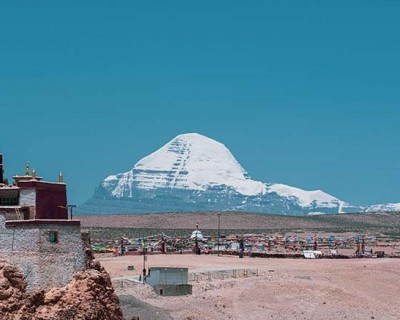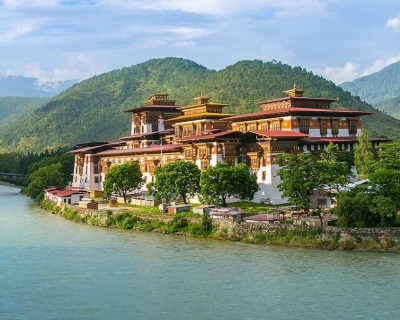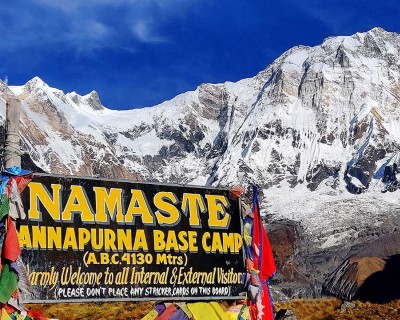Understanding Kanchenjunga Trek
Kanchenjunga Trek is generally renowned for its isolated and off-beaten trekking experience. If you are looking for a distinctive exploration experience that takes you away from the mainstream crowds and to the isolated virgin territories, then this trek is an ideal option.
However, as it is one of the longest trekking journeys in the Himalayas and is also the most isolated destination, trekkers need to deal with slightly elevated challenges. The Kanchenjunga Trek difficulty is at a moderate to challenging level.
Thus, the magical trails of this isolated region are slightly more demanding than other regular adventures. That’s why it is only recommended to trekkers who have some prior exploration experience of high-altitude and remote regions.
Although some experience will come in handy, it doesn’t mean that the trek is completely off the table for beginner trekkers. If you stick with a good preparation plan, you will be able to make up for the lack of the experience.
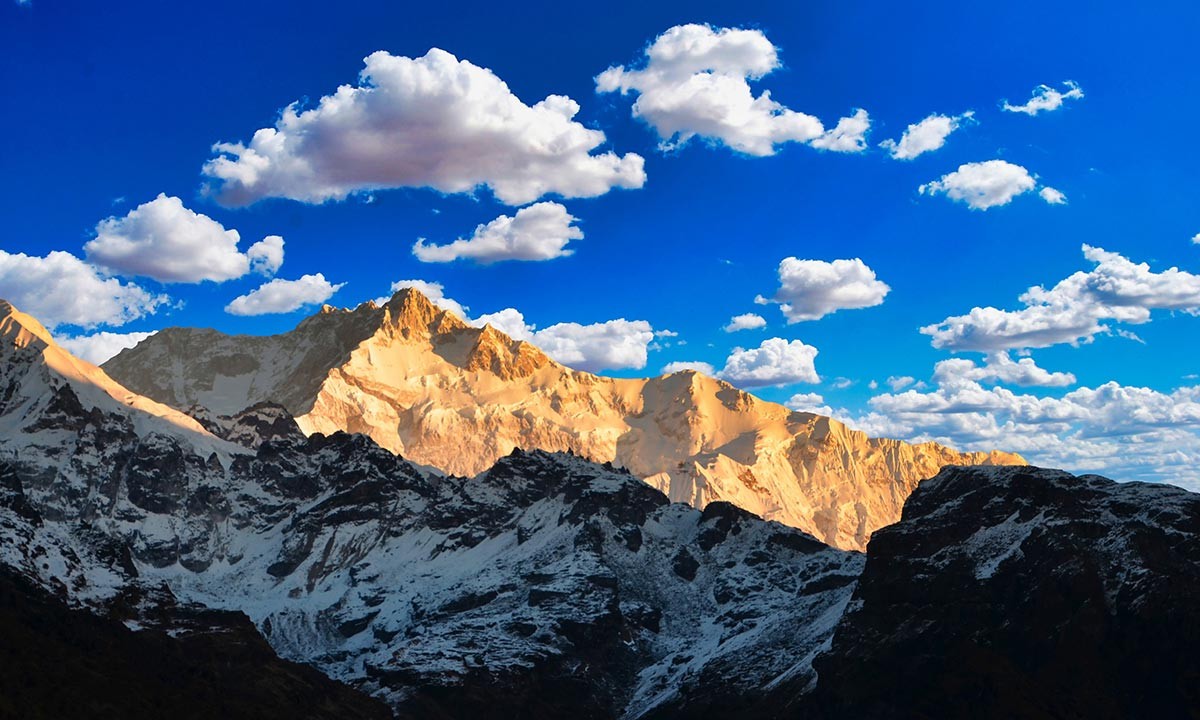
There aren’t any technical sections along the route and despite its long and isolated route, the major elevation gain in this trip is only 5,065 meters (16,617 feet) at Kanchenjunga North Base Camp. So, you could say that the overall walking distance, remoteness and some high elevated points along the route are the real challenges of this wonderful trip.
Physical Fitness and Training
It is no secret that, a good level of physical preparation and training will help you triumph any kind of hurdle along the route. So, if you emphasize on this aspect of Kanchenjunga Trek preparation, you will be able to enjoy this tranquil journey even if you don’t have that much of experience.
Normally, the preparation training for high-altitude treks in Nepal should be done for at least 3 to 6 weeks. However, considering the difficulty level of the trip and overall duration, you can extend it to a few more weeks to walk comfortably on the remote mountain trails.
There are three major core areas that you have to focus on for your trek: strength, endurance and cardiovascular. If you work on these factors, you will be able to enjoy a rewarding and less draining exploration.
Note: Don’t forget to include practice hikes in your training regime. It is the most effective way to understand the mountain terrains and your physical capabilities.
Mental Preparation
Although physical training is an absolute necessity for Kanchenjunga Trek preparation. You shouldn’t underestimate the mental preparation prospect of the journey either. The long trekking journey and physically demanding trails will also take on your mental state during the trip.
Thus, you will need to prepare mentally prepare for the unpleasant, uncomfortable and demanding factors of this remote exploration so you can actually enjoy the experience rather than just worry about the drawbacks.
Similarly, staying positive and determined throughout the trip will motivate your every step toward the goal. Here are some mental preparation tips that you can follow during your Kanchenjunga Trek.
Mental Preparation Tips for Kanchenjunga Trek
- Keep a positive mindset and stay determined to reach the goal
- Break the goal into smaller parts so you can take one step at a time
- Practice controlled breathing and learn to stay calm
- Surround yourself with positive people
- Learn to leave your comfort zone and be flexible
- Practise visualizing your trip with the challenges and discomforts you may have to face
- Work on identifying your fears and accept them to work toward improvement
- Take care of nutrition intake and your health; a healthy body promotes a healthy mindset
Trekking Gear and Equipment
Just like physical and mental preparation, packing right is also a crucial step for Kanchenjunga Trek preparation. Trekking with gear makes your journey much more comfortable and convenient than without right equipment.
Gear like a sleeping bag/sleeping pad, headlamp, powerbank, trekking poles, backpack, water bottle/hydration system, GPS, map, compass, etc. is really important for remote and high altitude exploration like trekking Kanchenjunga.
Beyond the helpful trekking gear, you also need to bring appropriate layers to keep yourself warm and comfortable in different climatic zones. Similarly, personal care and sanitization products are lifesavers in remote Himalayan regions such as this.
As for the additional packing, you can include your favorite snacks, choco bar, energy drinks and electrolytes. These can be helpful sources of energy boosts on days you are running low on battery.
Permits and Documents
Kanchenjunga Region, like most of the Himalayan region, falls under the protected area category. During this remote and thrilling Himalayan endeavor, you will cross a conserved area and a restricted area.
Thus, you can’t miss to collect the necessary permits for your Kanchenjunga Trek preparation. Here are the permits that are necessary for this off-beaten route.
Permits For Kanchenjunga Trek
- Kanchenjunga Conservation Area Entry Permit— US$ 20 per person (for first four weeks)
- Restricted Area Permit for Kanchenjunga— US$ 20
The conservation area permit is collected from the tourism board office in Bhrikutimandap, Kathmandu. But, as for the restricted area permit, trekkers cannot apply for it. Only government-certified agencies can apply for this permit.
Restricted Area Permit for Kanchenjunga is not issued by the tourism board or TAAN. It is issued by the Nepal Immigration Trekking Department’s office located in Maitighar, Kathmandu.
Note: As going through the application steps can be a hassle for this restricted region exploration, Marvel Adventure will collect all the necessary permits.
Also Read About:Solo Vs. Guided: The Best Way to Experience the Kanchenjunga Trek
.jpg)
Best Time for Kanchenjunga Trek
Another step that you have to be careful about during the Kanchenjunga Trek preparation is choosing the right season. If you are familiar with the high-altitude adventures in the Himalayas, then you understand the difference in experience at different points across the year.
Naturally, spring (March to May) and autumn (September to November), which are the most stable seasons across the year, are the top choices for high-altitude adventures. So, if you want to secure a comforting experience without having to deal with an extra set of weather-related challenges, you should explore this remote, far-eastern Himalayan route during one of these seasons.
Besides having weather favorability, these seasons are also popular for their own unique charms and highlights they bring to the table. Spring, the season of nature, is popular for the stunning visuals of landscapes that showcase the country’s diversity.
Similarly, if you are a Himalayan wildlife, birdlife, or plantlife enthusiast, this nature’s peak point is considered the ultimate period to make the best out of your journey. In the case of the autumn season, it is mostly known for the weather-stability and pleasantry it houses.
Although this season doesn’t boast breathtaking landscapes like the spring season, the autumn foliage has a unique charm to it. Moreover, it is also a perfect period to enjoy an enhanced cultural experience.
Acclimatization and Health Tips
Acclimatization Strategy
During the Kanchenjunga Trek, you will not only traverse across the isolated part of the Himalayas with thriving wilderness, but you will also move to significant altitudes. Your trekking journey starts from Sinuwa (980m) and you will steadily follow the winding trail to higher regions.
The major altitude jump points in this trekking route are Khambachen (4,000m), Lhonak (4,780m), and Kanchenjunga North Base Camp (5,065m). On the trekking route, you will gain a total altitude of 4,085 meters (13.402 feet) from the starting point. Thus, it is very important to follow a proper acclimatization schedule for both safety and comfort in this isolated Himalayan route.
You need to set sufficient resting periods across the trekking routes. Similarly, you should also be careful about not ascending too fast at rising altitudes and follow a slow-paced walk with enough short breaks in between.
Hydration and Nutrition
During your trek to the basin region of this sacred giant peak, you will need to move along some of the most remote and isolated sections of the country. You will have to take good care of your health and stick with proper health and diet plans.
Falling sick here or having to withdraw can severely affect the overall experience. So, it will be best if you take good care of your health and meet the hydration and nutrition criteria. You will also need a good amount of fuel to keep up with the physical demands of the trekking trail.
Similarly, staying hydrated throughout the trip (drinking at least 3 to 4 liters per day), will help to minimize the risk of altitude sickness. Thus, you should not underestimate the significance of both hydration and nutrition while taking on this epic mountain journey.
Helpful Tips to Deal With Altitude Sickness
- Train sufficiently for the trek so you don’t get too exhausted during the trek
- Stay hydrated throughout the trip and eat a balanced diet
- Pay attention to your body language and don’t push it too hard
- Avoid consuming alcohol and cigarettes during the trek
- If necessary consider taking altitude sickness medication
- Don’t climb too rapidly to the higher regions
- Dress in layers and keep yourself warm and comfortable
- Get enough rest and sleep
Learn More About:How to Reach Kanchenjunga? - A Complete Guide
.jpg)
Logistic Planning
Even if you have decided on the trekking journey, it is important to plan all the logistical necessities of the trip. You will have to plan out for the accommodation facilities, food along the route, transportation facilities, communication, health safety and so on.
This is a very crucial step in the preparation for the Kanchenjunga Trek, as proper coordination among all these factors is essential for a comfortable journey. If you are not familiar with the region due to its remoteness, booking for the services in advance can be quite a difficult.
Similarly, managing the transportation needs, meal plans throughout the route and overseeing health safety and communication is not an easy feat. You will have to be sharp about all these factors and properly coordinate with every party involved to ensure your trek plan remains seamless.
As managing all these details on your own and still enjoying the trek can be a hassle, We suggest you to hire a reputable agency like Marvel Adventure to see your trip plans. That way, you will be able to truly enjoy the trip feeling free without the need to worry about anything.
Hiring Guide and Porter
Since 1st April 2023, solo exploration activities in the higher altitudes have been banned in Nepal. Due to the safety concerns and proper management of tourism activities, the authorities have taken this step.
There are also several benefits of hiring guides and porters for your trek. For instance, guides overlook the navigational part, logistic management and they are expert in local knowledge. Similarly, the guides also take care of your health-safety and assess the weather and trail conditions throughout each day of the trek.
So, you can take the guided trip as a safe, informative and enriching experience. Similarly, the porters also add value to your trip by providing local insights and assisting you with your luggage. In guided trips like Marvel Adventures’s 18 Days Kanchenjunga Trek, we will provide an expert guide with significant years of experience in leading treks in the Kanchenjunga region.
As for the porters, we provide one porter to two of the trekkers. Our helpful porter will assist with about luggage weighing upto 15 kg (33 lbs) of each trekker. If you have packed heavily for the trip and want to travel light, you can also hire an extra porter with us for your Himalayan journey.


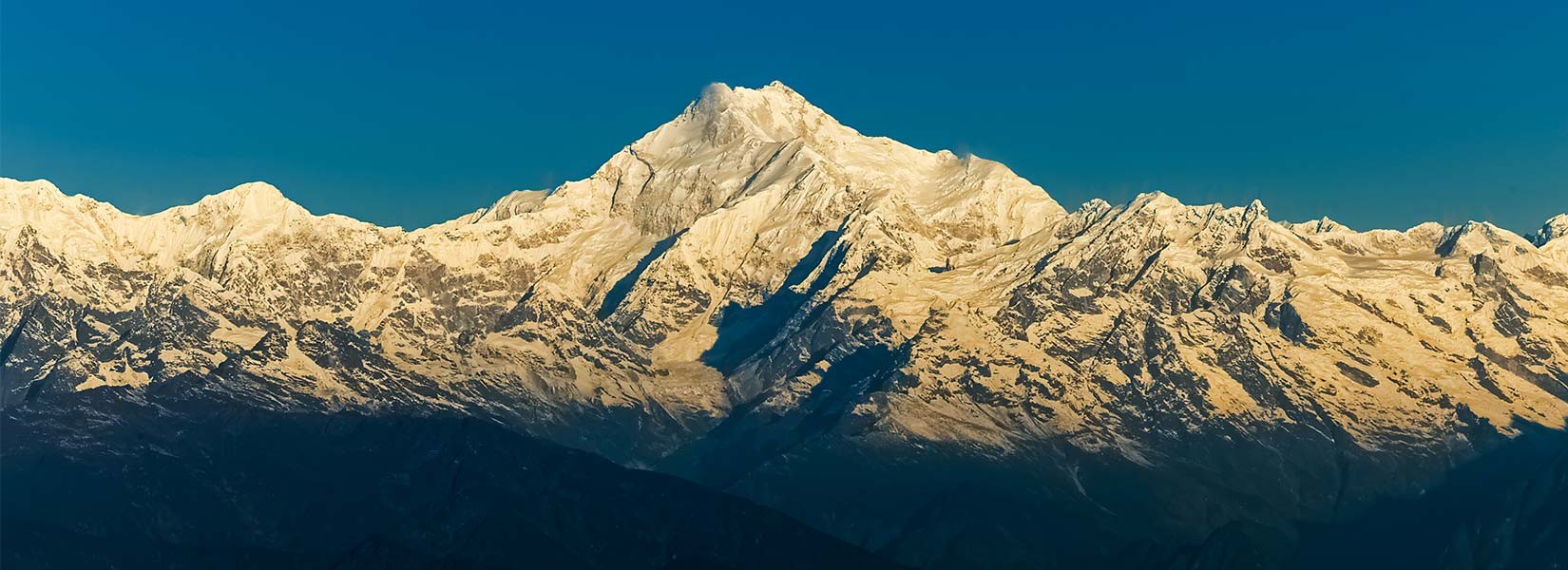

.jpg)
.jpg)
